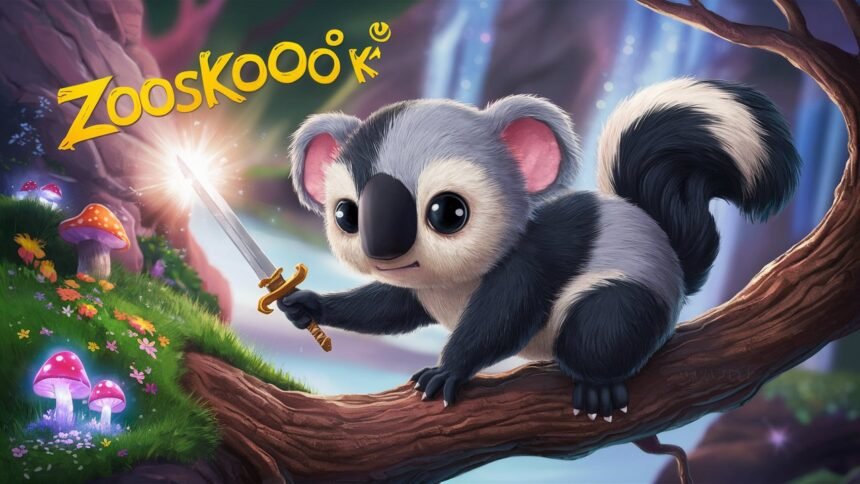Zooskooñ (pronounced “zoo-skoon”) is an emerging concept in wildlife conservation and public education, blending innovative animal care, sustainable architecture, and interactive learning. While traditional zoos have faced criticism for enclosures and animal welfare, Zooskooñ reimagines the relationship between humans, animals, and ecosystems. This article explores the core principles of Zooskooñ, its groundbreaking practices, and its potential to redefine how society interacts with wildlife. From habitat design to community involvement, Zooskooñ represents a paradigm shift in conservation ethics and experiential education.
The Origin and Philosophy of Zooskooñ
The term “Zooskooñ” derives from a fusion of “zoo” (a facility housing animals) and a fictional root word “skooñ,” symbolizing “harmony” in an ancient dialect. This philosophy prioritizes coexistence over exhibition, aiming to create environments where animals thrive naturally while humans learn through observation rather than intrusion. Unlike conventional zoos, Zooskooñ emphasizes biomimetic design—structures that mimic natural ecosystems—to reduce stress on animals and promote biodiversity. The core mission is to foster empathy for wildlife by immersing visitors in authentic, unscripted encounters with nature.
Habitat Innovation: The Zooskooñ Biome Model
Zooskooñ’s habitats, termed “Biomes,“ are large-scale, climate-controlled ecosystems replicating regions like tropical rainforests, arid deserts, and coral reefs. Each biome integrates native flora, water systems, and microclimates to support animal behavior akin to wild conditions. For example, a savanna biome might house giraffes, zebras, and birds in a shared space, encouraging natural interspecies interactions. Advanced filtration systems and renewable energy sources ensure sustainability, while augmented reality (AR) guides help visitors understand ecological connections without disrupting habitats.
Ethical Animal Stewardship in Zooskooñ
Zooskooñ rejects traditional captivity models in favor of “guardianship”—a partnership where humans act as caretakers rather than controllers. Animals are sourced from rescue programs, rehabilitation centers, or endangered species initiatives, with breeding programs focused on reintroduction to the wild. Veterinarians and biologists monitor health using non-invasive technology like AI-powered cameras and biometric sensors. Enrichment activities, such as puzzle feeders and habitat rotations, mimic wild challenges, ensuring mental and physical well-being.
Education Through Immersion: The Zooskooñ Experience
Education is central to Zooskooñ’s mission. Instead of static signage, interactive “Eco-Pods” offer virtual reality (VR) tours of global ecosystems, while live feeds from wildlife reserves connect visitors to conservation efforts worldwide. Workshops on composting, native gardening, and wildlife tracking empower communities to take action. Schools partner with Zooskooñ for semester-long programs where students design habitat enhancements, blending STEM learning with environmental ethics.
Technology and Sustainability in Zooskooñ
Zooskooñ leverages cutting-edge tech to balance visitor access with animal privacy. “Smart Barriers” use holographic displays and motion sensors to create invisible boundaries, allowing animals to roam freely while keeping humans at a safe distance. Solar panels, rainwater harvesting, and waste-to-energy systems make Zooskooñ carbon-neutral. Blockchain platforms even track donations transparently, showing contributors exactly how funds support specific species or habitats.
Criticisms and Challenges
Despite its ideals, Zooskooñ faces scrutiny. Critics argue that large-scale biomes are costly and energy-intensive, potentially diverting resources from in-situ conservation. Others question whether human interaction—even indirect—can ever be fully ethical. Zooskooñ addresses these concerns through partnerships with global NGOs and a “visitor cap” policy to minimize ecological footprints. Ongoing research measures animal stress levels to refine practices continually.
Conclusion: Zooskooñ as a Catalyst for Change
Zooskooñ is more than a zoo—it’s a movement advocating for a future where conservation and human curiosity coexist responsibly. By prioritizing animal autonomy, immersive education, and sustainable innovation, it challenges us to rethink our role in nature’s tapestry. While not a perfect solution, Zooskooñ sparks vital conversations about empathy, ethics, and environmental stewardship, inspiring a new generation to protect Earth’s biodiversity.
Frequently Asked Questions (FAQs)
Q1: What distinguishes Zooskooñ from traditional zoos?
Zooskooñ focuses on creating natural, self-sustaining ecosystems rather than enclosures. It emphasizes animal welfare through biomimetic habitats, ethical sourcing, and non-invasive technology, alongside immersive, educational experiences for visitors.
Q2: How does Zooskooñ contribute to wildlife conservation?
Through partnerships with rescue centers and global conservation programs, Zooskooñ prioritizes rehabilitating and reintroducing endangered species. Revenue supports habitat restoration projects and anti-poaching initiatives worldwide.
Q3: Are Zooskooñ’s biomes safe for visitors?
Yes. Smart Barriers and guided VR tours ensure safety without cages. Trained naturalists accompany groups to educate and enforce respectful behavior toward animals.
Q4: Can Zooskooñ’s tech-heavy approach work in developing regions?
The organization is piloting modular, affordable biome designs for smaller communities, using localized materials and renewable energy to adapt to diverse climates and budgets.
Q5: How can I support Zooskooñ’s mission?
Donations, volunteering, and advocacy are key. Individuals can also adopt sustainable practices at home, such as reducing plastic use or supporting eco-friendly brands partnered with Zooskooñ.







